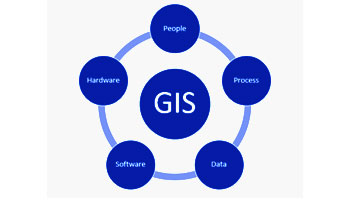Find Best GIS Software for Your Business
We help you find the right GIS Software for your business.

Browse Popular GIS Software
Up-to-date listing of GIS Software to assist you throughout your software selection and purchase journey.
GIS Software
Explore best GIS Software for your business.
GIS Software:
GIS Software or Geographic Information System software is a software that is used to store, retrieve, manage, display, and analyze all types of geographic and spatial data.
Maps and other graphic displays of geographic information can be produced for analysis and presentation. The software can be used to visualize spatial data or to build decision support systems for any organization.
Features and Benefits of GIS Software:
The GIS Software has several features that can benefit the user in many ways to grow their business. Some of these include:
- Data can be stored on geographical features and their characteristics.
- The features of a GIS software can be classified as points, lines, or areas, or as raster images. The city data could be stored as points, road data could be stored as lines, and boundaries could be stored as areas, while aerial photos or scanned maps could be stored as raster images on a map.
- The features located in any arbitrary region of a map can be identified as the information are stored using spatial indices by the software. For example, all the locations within a specified radius of a point, or all the streets that run through a territory can be quickly identified and mapped using GIS software.
- A professional strength relational database can be implemented.
- Attribute data can be joined or detached from geographic layers and tables.
- Spatial queries, polygon overlay, and other location based analysis can be done by integrating relational data manipulation with robust and powerful geoprocessing.
- The data can be moved easily to and from relational tables and geographic databases.
- Presentation ready maps can be created using the own data or the default maps provided by the software.
- Customization of layer visibility and drawing order can be done by geographic database layering controls.
- Multiple maps can be open simultaneously. Maps can be duplicated, combined, synchronized, tiled, cascaded, and minimized or maximized.
- Font/style/opacity settings for points/lines/areas/labels/legends/drawings can be done by layer style control. point and area styles can use most image formats and their resolution can be controlled through scaling.
- Maps and graphics can be copied, pasted or saved as pictures or bitmaps with optional quality or resolution settings that can be inserted into MS Office and other external applications.
- Locations anywhere on earth can be identified by the tabular and geographic find tool.
- Geocoding can be supported by address, postal code, city/town, join, coordinate, longitude/latitude, by any populated place in the world which can be either village, town, city, and also manually by using robust and flexible pin-mapping tools.
- Custom geocodable indexes can be created to pin-map based on external datasets
- The the geographic components of your data can be analyzed by geographic analysis tools provided by the software.
- Districts or Territories can be created using map-based filters or using tabular groupings.
- The best location for one or more facilities can be identified from a set of candidate sites by a facility location tool.
- The identification of centers of gravity among points is possible through weighted center calculations.
- The shortest path calculations helps minimizing the cost of the path as an ordered or unordered route with options to produce directions and to return to the origin.
- The extent to which locations can be accessed within a certain drive time or distance can be visualized by drive time or distance bands.
- Territories can be automatically created by a balancing tool that are balanced by a specific demographic.
- Routes can be optimized by routing tools for several vehicles that need to reach many destinations for deliveries and pickups in fixed time windows
- Map-based calculations are allowed by length/area measurement tools.
- The study area can be divided by using a triangulated irregular network (TIN) with the help of areas-of-Influence.
- GPS data can be read,animated or imported, tracks can be overlayed with aerial photos and topographic or vector maps, real time GPS locations can be tracked, vector line or point layers can be created from GPS playback files and formats such as GPX can be imported or exported.